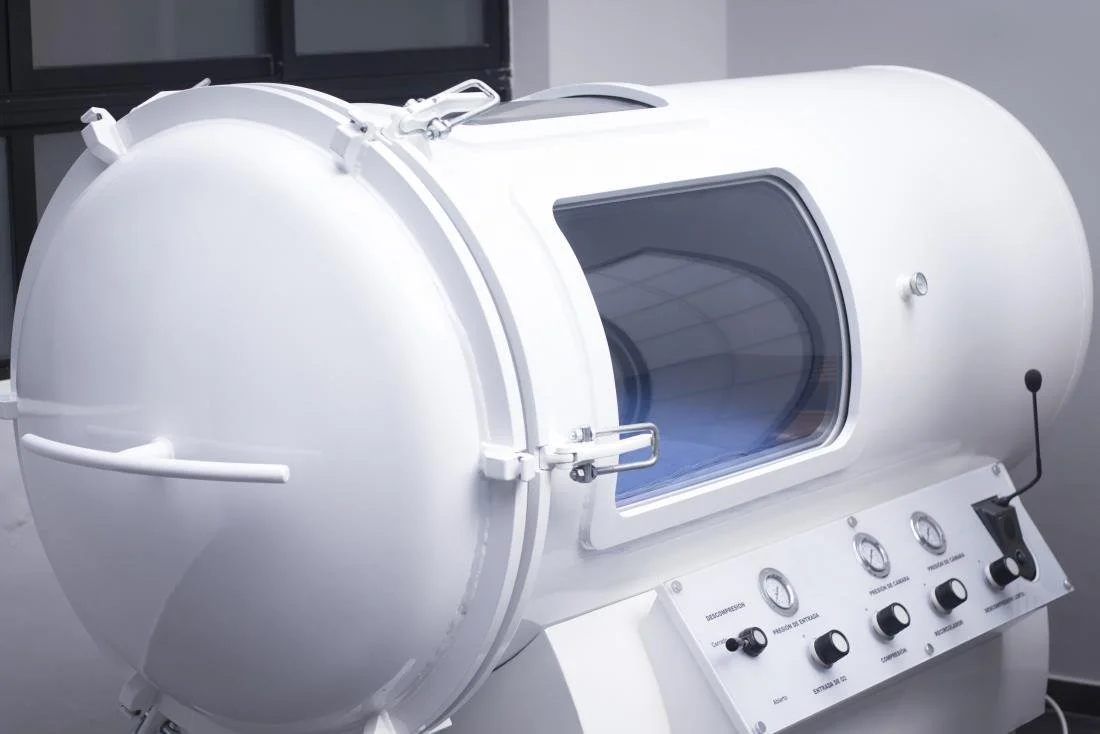Hyperbaric Oxygen Therapy
Our body’s tissues need oxygen to function. The air we breathe is only 21% oxygen. HBOT involves breathing 100% (pure) oxygen while in a special space called a hyperbaric chamber. The air pressure inside is raised to a level that is higher than normal air pressure. The increased air pressure in the chamber helps the lungs collect more oxygen. HBOT accelerates the body's natural healing process by increasing the amount of oxygen in the blood. The body needs oxygen to heal itself. Many injuries and illnesses involve the lack of oxygen-rich blood, which is then unable to travel to affected areas of the body. Getting more oxygen to the tissues that need it can help the body heal, fight certain infections, and treat a variety of conditions.
HBOT can be used alone or with other medical treatments, such as medications or surgery. Most people receive hyperbaric oxygen therapy on an outpatient basis for 1 to 2 hours each session. At the Concussion & Sports Medicine Institute, we utilize a two-person hard shell hyperbaric chamber that goes to 3 ATA. ATA is the term or unit used to describe hyperbaric pressure in millimeters or inches of mercury (mmHg, inHg), pounds per square inch (psi), feet or meters of sea water (fsw, msw), and atmospheres absolute (ATA).
One atmosphere absolute, or 1 ATA, is the average atmospheric pressure exerted at sea level, or 14.7 psi. Two atmosphere absolute, or 2 ATA, is twice the atmospheric pressure exerted at sea level. If a physician prescribes a one hour HBOT treatment at 2 ATA, the patient breathes 100 percent oxygen for one hour while at two times the atmospheric pressure at sea level.
What does HBOT Treat?
HBOT has been used to treat many different medical conditions and injuries that benefit from having an increased level of oxygen in the tissues. The most commonly known uses for HBOT that are often covered by insurance include:
Arterial gas embolism (air bubbles in the blood vessels)
Carbon Monoxide Poisoning (from breathing noxious fumes)
Cyanide poisoning
Decompression sickness (a common scuba diving condition, also called "the bends")
Specific types of non-healing wounds such as diabetic wounds
Gas Gangrene (fast-spreading gangrene in infected wounds that gives off a foul-smelling gas)
Intracranial abscess (originating from an ear infection, sinus infection, or another primary source of infection)
Tissue damage from radiation therapy.
Osteomyelitis (long-term inflammation of bone or bone marrow)
Compromised skin grafts or flaps
Severe anemia
Brain abscess
Burns
Crushing injury
Sudden deafness
Sudden, painless vision loss
There is growing research on additional conditions that are being successfully treated with HBOT. At the Concussion & Sports Medicine Institute, we employ HBOT to treat the following additional conditions:
Experts estimate tHERE ARE 3.8 MILLION CONCUSSIONS PER YEAR IN COMPETITIVE SPORTS AND RECREATIONAL ACTIVITES. CLINICAL STUDIES DEMONSTRATE STRONG EVIDENCE THAT HBOT MAY BE CAPABLE OF HEALING THE DAMAGED BRAIN RESULTANT FROM CONCUSSIONS.
Joe Rogan | Can Hyperbaric Therapy Reverse Brain Damage? w/Justin Wren
Risks & Side Effects
HBOT is considered a natural and relatively safe mode of therapy. While rare, risks of the procedure include:
Middle ear injuries
Sinus congestion and pressure
Temporary nearsightedness
Claustrophobia
Oxygen poisoning
Seizures
The side effects of HBOT are usually mild and temporary, provided some safety measures are followed. These safety measures include that the therapy is administered for no longer than two hours in duration per session and that the pressure inside the chamber is less than three times that of the pressure in the atmosphere.





